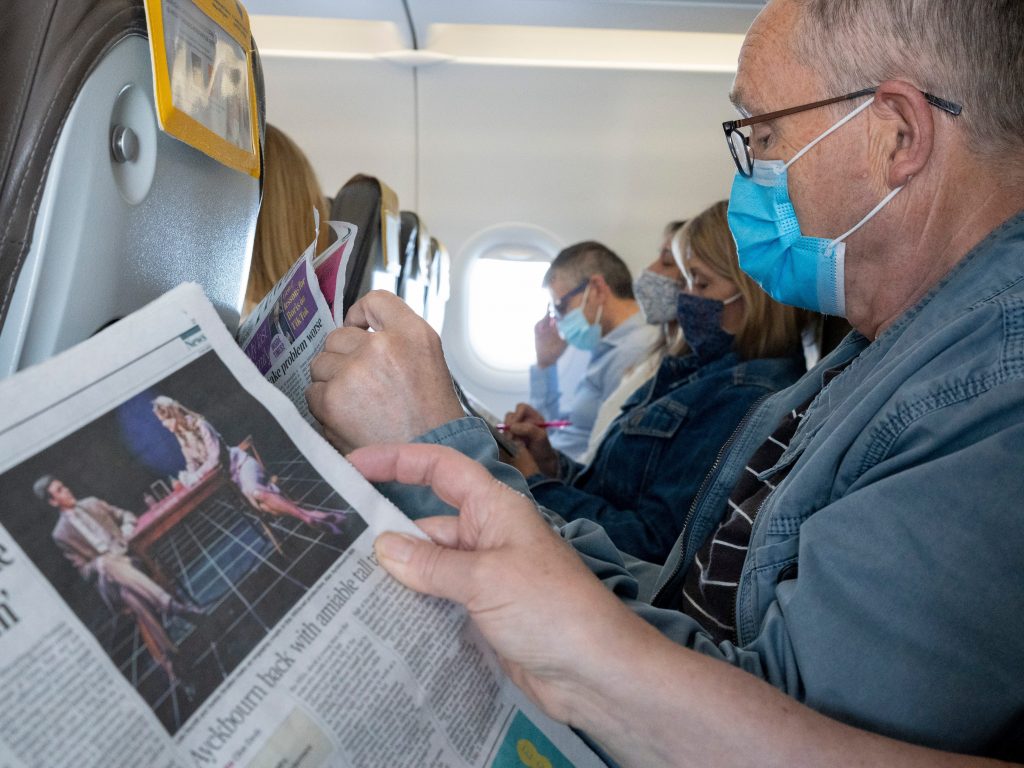- MIT researcher Dr. Arnold Barnett said infection risk on planes is likely higher now than earlier in the pandemic.
- The BA.5 variant's contagiousness and immunity evasion offers even more risk when traveling.
- Although there is no longer a federal mask mandate on planes, experts say wearing one can offer protection.
In January 2021, passengers on a full 2-hour flight had a one in 1,000 chance of contracting COVID-19, a study published July 2 in Health Care Management Science suggests.
Researchers from MIT used COVID-19 infection rates from June 2020 to February 2021, along with data on the virus's airborne spread, to model the risk of contracting COVID-19 at different passenger capacities during the study time period. The study suggests that from around December 2020 to January 2021, passengers had the biggest risk of catching COVID-19 while flying.
Co-author of the study, Dr. Arnold Barnett, who is an MIT professor who specializes in aviation safety, told Insider that infection risk on US planes is likely "considerably higher" now, because of a lack of mask mandates on planes and fuller flights.
Seat proximity matters, studies show
The Omicron subvariant BA.5 is the dominant COVID strain in the US, and many new cases are reinfections, Insider's Hilary Brueck and Natalie Musumeci previously reported.
People are more likely to contract COVID-19 in enclosed indoor spaces, according to the Centers for Disease Control and Prevention (CDC), especially without proper air filtration or masks. But commercial airplanes, like the Boeing 737 or Airbus 320 used in this study, are equipped with High Efficiency Particle Air (HEPA) filters, which decrease the risk of transmission, according to a 2020 report from the Harvard School of Public Health.
A small study published November 2020 in Emerging Infectious Diseases followed 217 passengers on a 10-hour commercial flight, when the mask mandate was still in effect, and found 16 people tested positive in the days following their arrival. The study suggested that seat proximity was a large indicator of transmission risk.
Risk of infection is most likely higher now, according to an MIT researcher
MIT researchers found that while the risk of infection dropped to 1 in 6,000 on half-full flights in the summer of 2020, that number rose to 1 in 1,000 around December 2020 and January 2021 on full planes.
Barnett told Insider that due to the contagiousness of the BA.5 variant, lack of mask mandates on public transit, and much fuller planes than in 2020, he expects infection risk is higher now than what was found in the study.
The risk is likely even greater on flights exceeding two hours, or for passengers on multiple connecting flights, he said.
Barnett said he regularly travels by plane with an N95 mask and tries to keep his distance from other travelers when he can.
Experts say you should still wear masks when flying
As of April 2022, the Transportation Security Administration no longer enforces a federal mask requirement for people traveling on planes.
However, both the CDC and other public health experts still recommend wearing a mask on planes. Airplane HEPA filters are not always running while boarding or leaving the plane, and won't always protect you from exposure, Gigi Gronvall, an epidemiologist and Senior Scholar at the Johns Hopkins Center for Health Security, previously told Insider.
